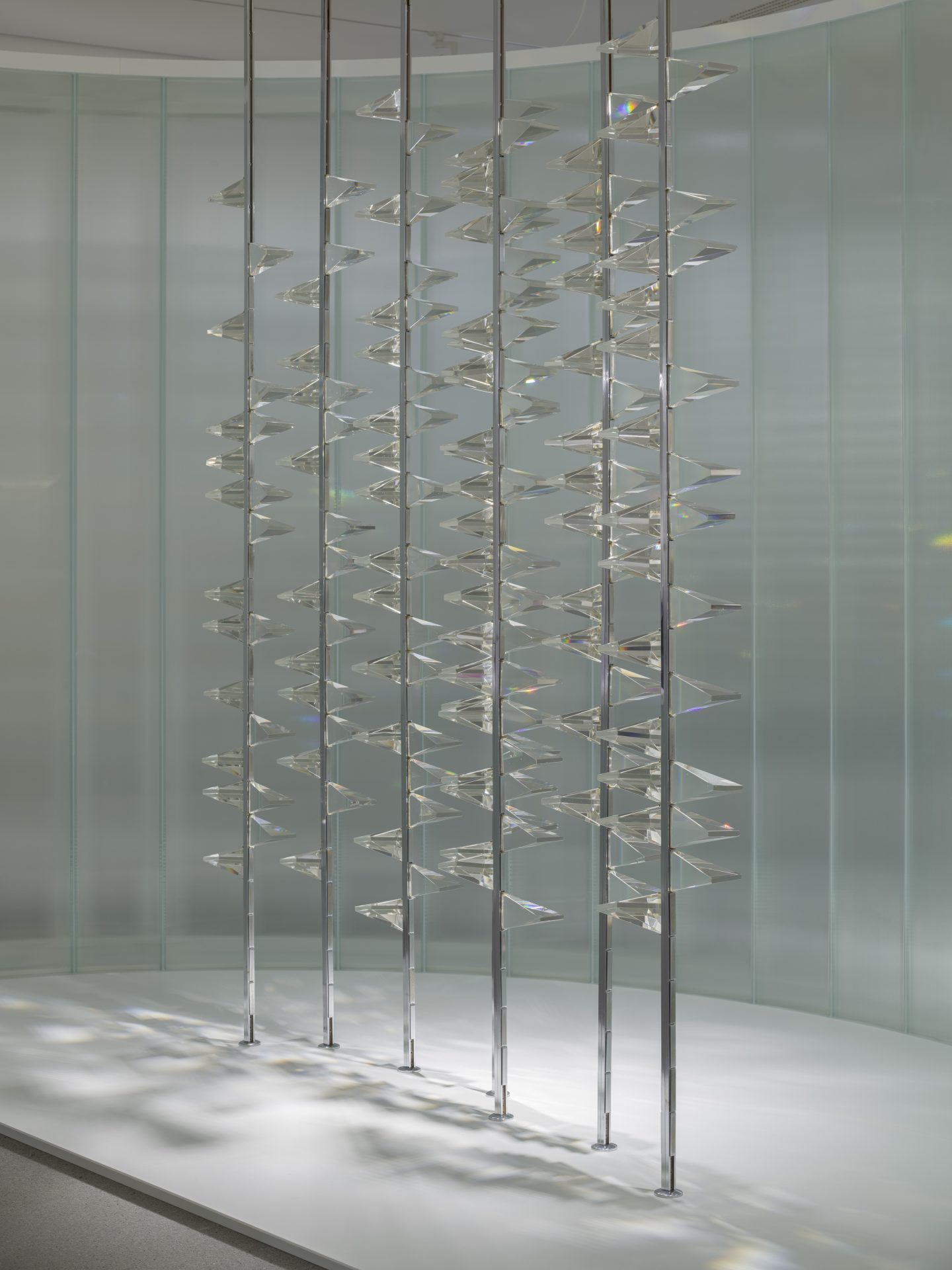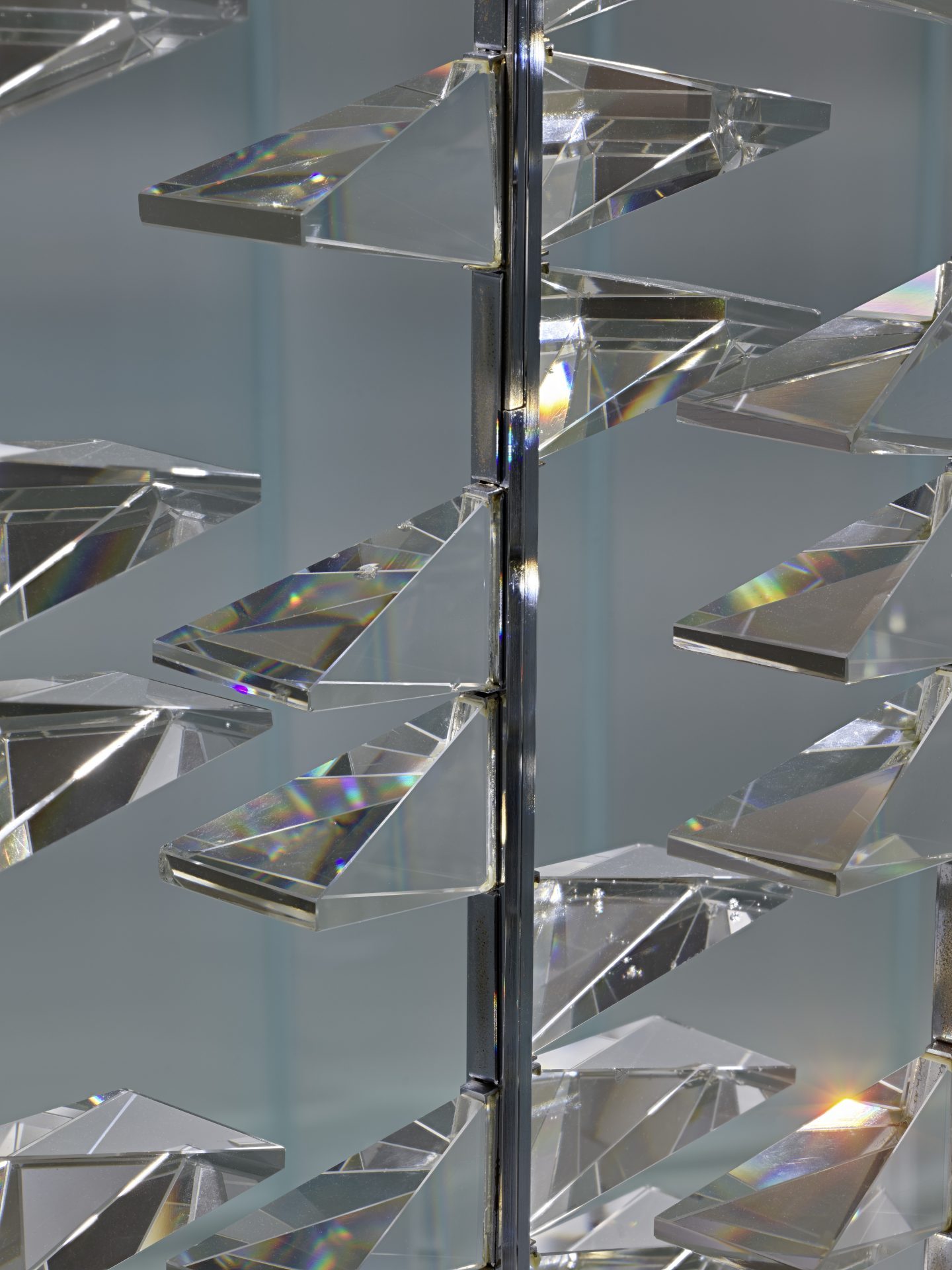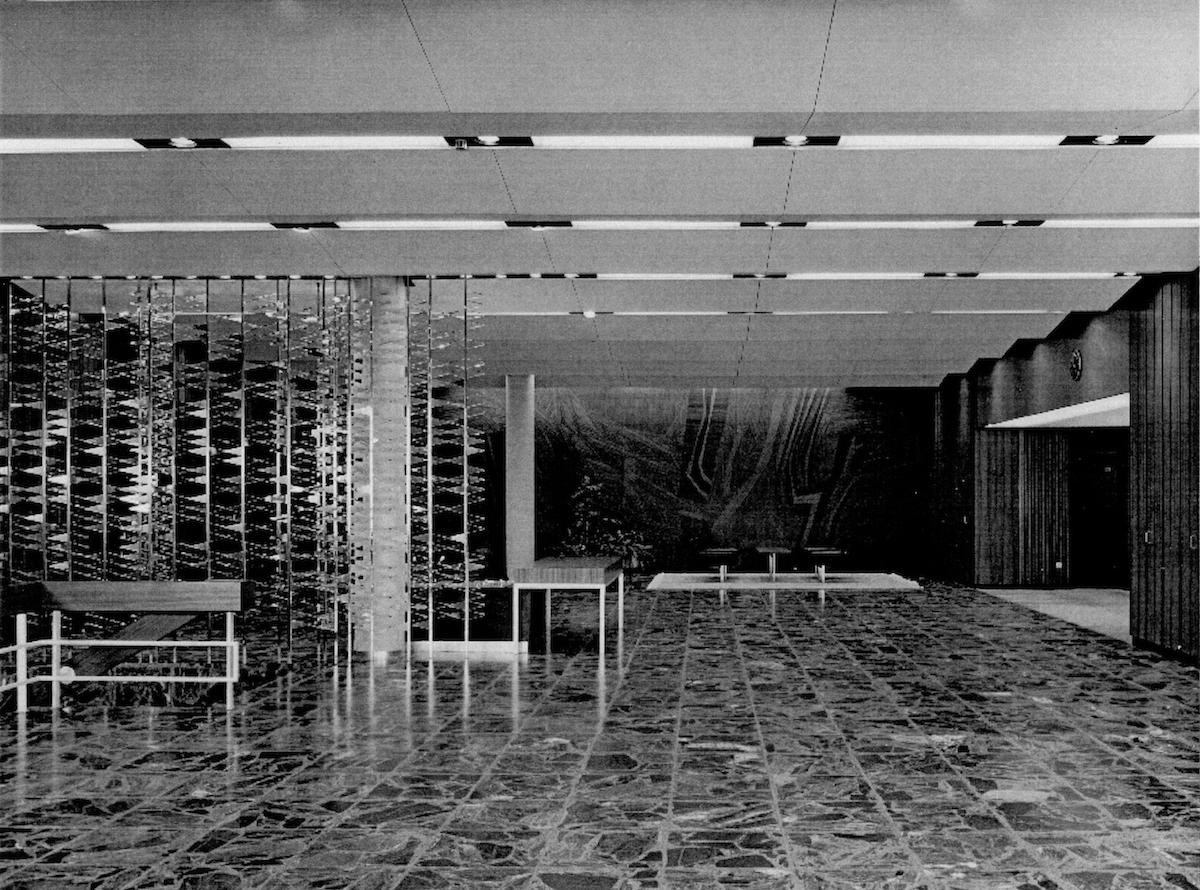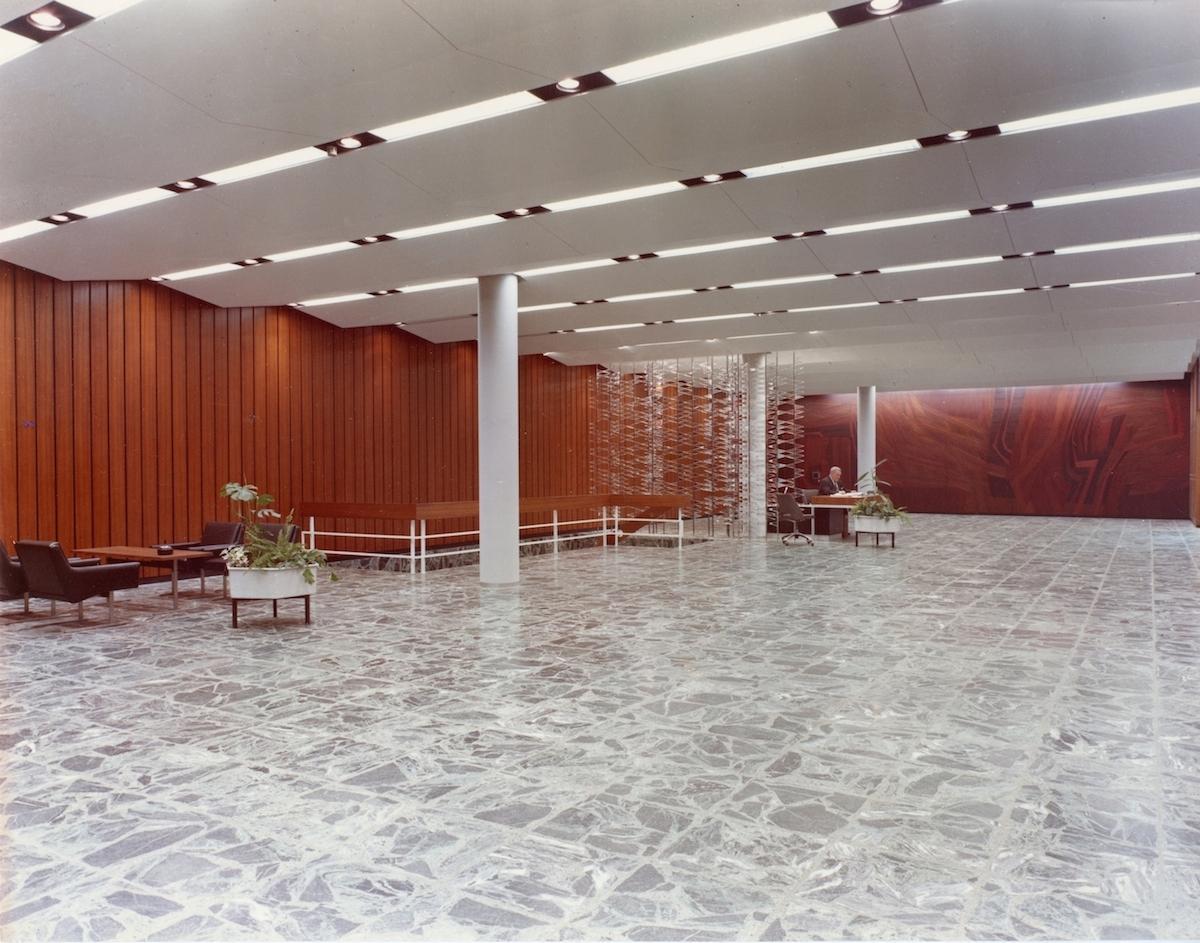Aloys Ferdinand Gangkofner’s Prisma Installation
Author:
Xenia Riemann-Tyroller
min
Reading Time
To mark the 100th anniversary of its foundation in 1925–26, Die Neue Sammlung has dedicated a new room to glass in all its diversity and blazing color.
To this end, Office Heinzelmann Ayadi (OHA) has realized a dedicated glass exhibition architecture for the presentation of a special object:
The glass prism installation designed by Aloys Ferdinand Gangkofner (1920 – 2003).
The piece consists of over 170 glass prisms that are threaded onto seven vertical metal rods. They are arranged on the latter in such a way that despite the stationary nature of the structure, rhythm and movement are created. Thanks to various spotlights the glass prisms glitter and cast the color of the spectrum into the surroundings.


Originally, this installation was located in the lobby of the Osram head office in Munich. Serving as a partition, it reflected artificial light but also natural light that entered through the large glass windows. The six-storey high-rise with a square footprint was part of a complex designed by architect Walter Henn (1912 – 2006) for the international lighting manufacturer and was realized in 1965.
Several factors made Osram’s administration building an important example of international Modernism in post-War Germany: It featured the first open-plan offices in Europe, generous room layouts, large panes of glass as partitions between conference rooms, and wraparound ribbon windows that transformed the entire building into a glowing cube at night.
At the time Aloys Ferdinand Gangkofner was teaching Glass Design at the Academy of Fine Arts in Munich. Together with his assistant Karl R. Berg (born 1943), who had developed the shape of the glass prisms, he designed an installation for the lobby comprising 19 vertical, differently staggered rods with over 340 glass prisms.


The prisms out of lead crystal were cast at Hessische Glaswerke in Stierstadt and then cut by the Sim company in Krumbach. Both firms no longer exist.
In 1973, Gangkofner was appointed Honorary Professor at the Munich Academy, and in 1983 he was awarded the Chair of Glass and Light. He was succeeded in 1993 by Norbert Prangenberg (1949 – 2012), Professor of Ceramics and Stained Glass.
Despite concerted efforts by private investors to save it, in 2018 the building was demolished after being sold to a developer.
However, before the glass cube was razed to the ground, Die Neue Sammlung seized the extraordinary opportunity to document, dismantle, and ultimately save the installation. At this juncture it had already suffered somewhat, not all the glass prisms had been preserved, and many had been damaged.
This is why Die Neue Sammlung is only showing a section of the original installation setting, which is well documented in technical drawings of the layout from the private collection of the designer’s widow Ilsebill Gangkofner.
The glass prism display is now an integral part of the permanent collection. And though it is now bereft of its original architectural context, its story is still being told – one aspect of which becomes particularly evident: glass and light are inextricably linked and also enlighten those who see them.